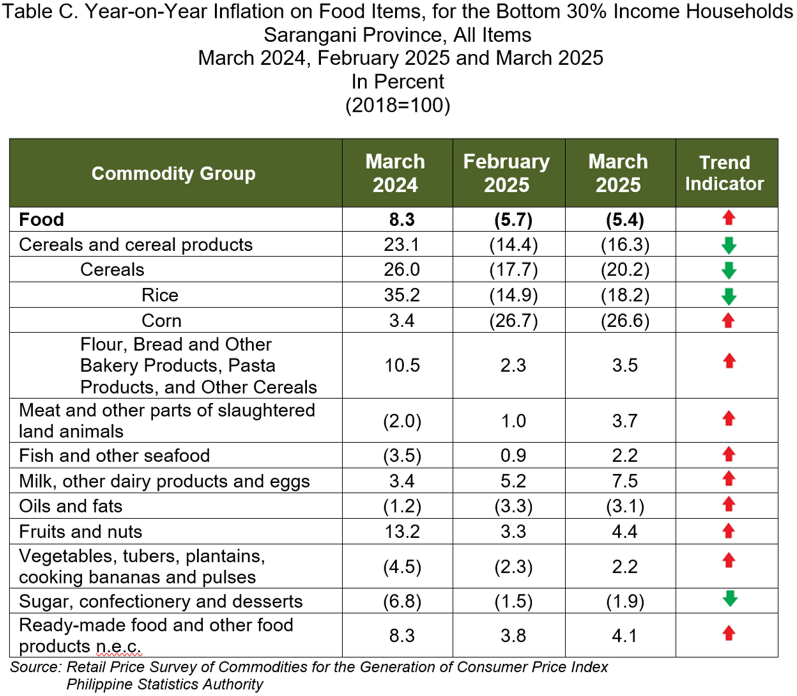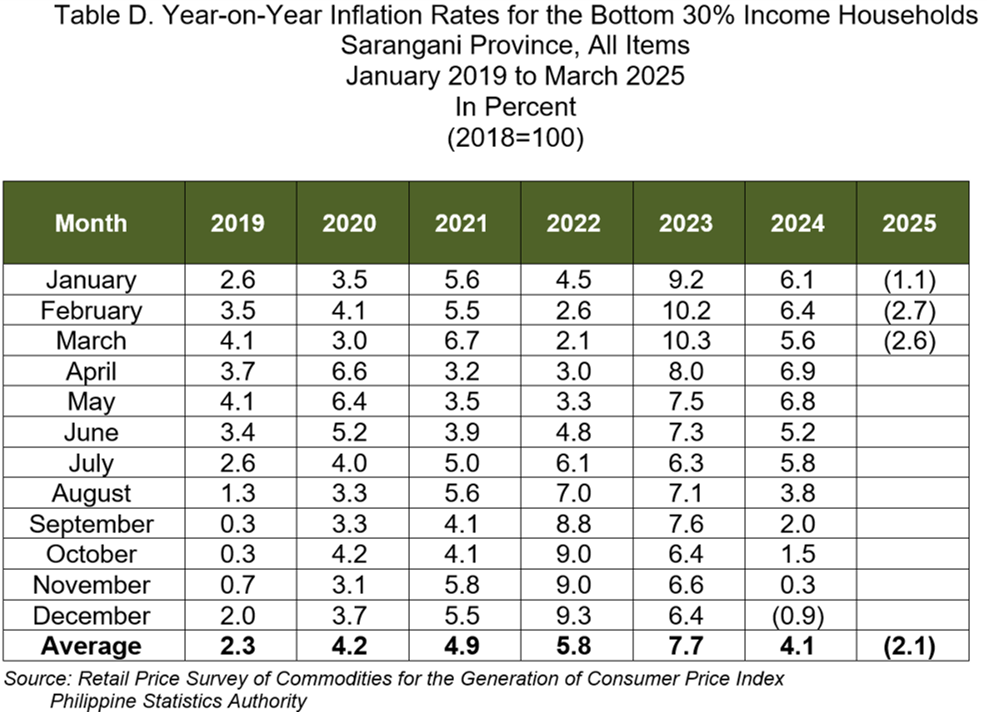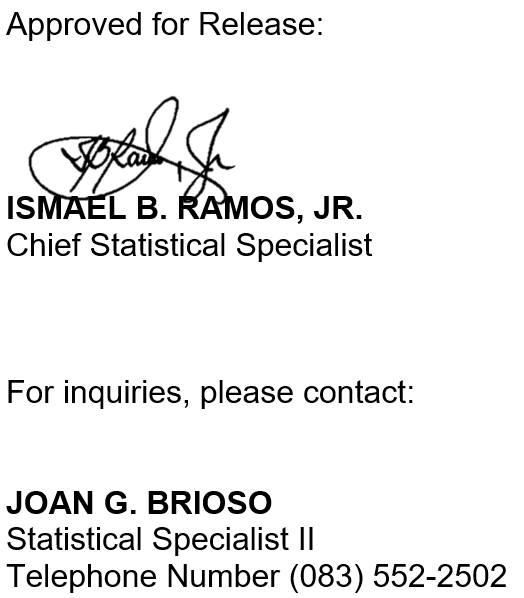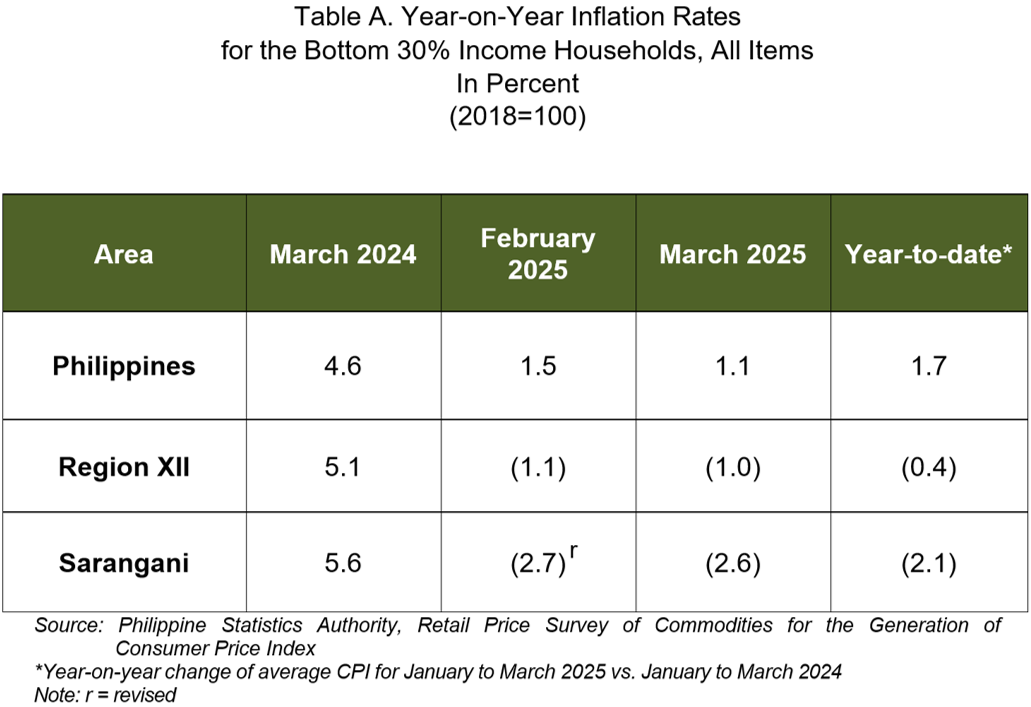
A. Sarangani Province
1. Overall Inflation
The overall inflation rate for the bottom 30% income households in Sarangani Province recorded a slower annual decrement at 2.6 percent in March 2025 from a 2.7 percent annual drop in February 2025. In March 2024, inflation rate in the province was higher at 5.6 percent. (Figure 1, Tables A and B)
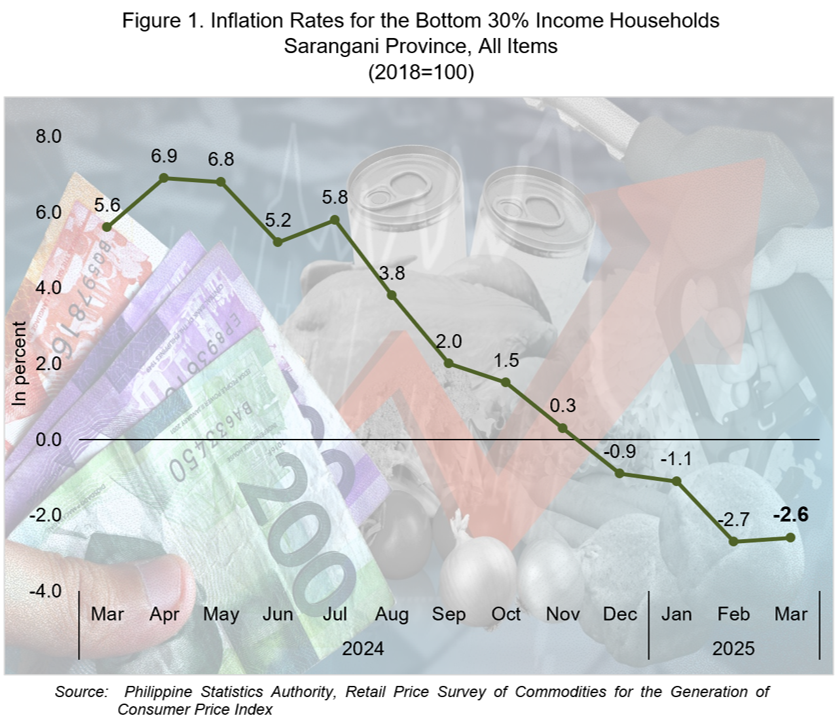
1.1 Main Drivers to the Upward Trend of the Overall Inflation (Table B)
The uptrend in the overall inflation for the bottom 30% income households in March 2025 was brought about by the slower year-on-year decline in food and non-alcoholic beverages at 5.0 percent. and housing, water, electricity, gas and other fuels at 0.3 percent from a 5.3 percent and 1.5 percent annual decrease in February 2025, respectively.
In contrast, slower annual increases were observed in the following indices for the bottom 30% income households in March 2025:
a) Alcoholic beverages and tobacco, 5.1 percent from 5.4 percent;
b) Clothing and footwear, 1.0 percent from 1.3 percent;
c) Furnishings, household equipment and routine household maintenance, 1.0 percent from 1.2 percent; and
d) Recreation, sport and culture, 3.6 percent from 3.9 percent.
Moreover, the index of transport posted an annual decrease at 2.4 percent in March 2025 from a 0.1 percent annual increment in the previous month.
Meanwhile, the following commodity groups retained their respective previous month’s inflation rates:
a) Health, at 1.8 percent;
b) Information and communication, at zero inflation;
c) Education services, at zero inflation;
d) Restaurants and accommodation services, at zero inflation;
e) Financial services, at zero inflation; and
f) Personal care, and miscellaneous goods and services, at 4.7 percent.
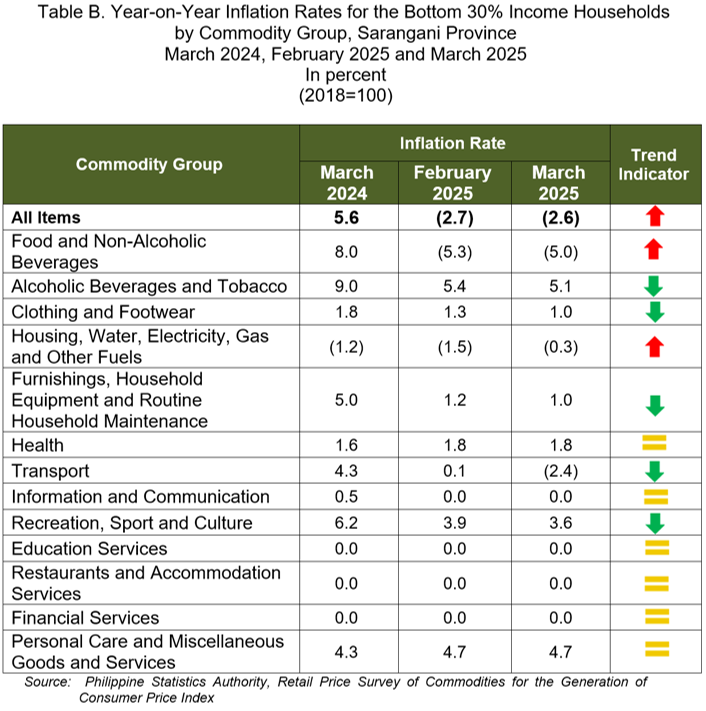
1.2 Main Contributors to the Overall Inflation
The following commodity groups were the top two contributors to the March 2025 overall inflation for the bottom 30% income households:
a) Food and non-alcoholic beverages with 116.0 percent share or -3.0 percentage point; and
b) Transport with 5.9 percent share or -0.2 percentage point.
2. Food Inflation
Food inflation for the bottom 30% income households at the provincial level posted a slower annual decrement at 5.4 percent in March 2025 from a 5.7 percent annual decline in the previous month. In March 2024, food inflation for this particular income group was higher at 8.3 percent.
2.1 Main Drivers to the Upward Trend of the Food Inflation (Table C)
The acceleration of food inflation for the bottom 30% income households in March 2025 was mainly due to year-on-year increment in the index of vegetables, tubers, plantains, cooking bananas and pulses at 2.2 percent from a 2.3 percent annual decrement in February 2025. This was followed by fish and other seafood with a faster annual increase at 2.2 percent and meat and other parts of slaughtered land animals at 3.7 percent during the month from a 0.9 percent and 1.0 percent in the previous month, respectively.
Furthermore, faster annual increase was observed in the following indices in this particular income group during the month:
a) Flour, bread and other bakery products, pasta products, and other cereals, 3.5 percent from 2.3 percent;
b) Milk , other dairy products and eggs, 7.5 percent from 5.2 percent;
c) Fruits and nuts, 4.4 percent from 3.3 percent; and
d) Ready-made food and other food products not elsewhere classified (n.e.c.), 4.1 percent from 3.8 percent.
Moreover, slower annual decrease was recorded in the indices of corn at 26.6 percent, and oils, and fats at 3.1 percent in March 2025 from a 26.7 percent and 3.3 percent annual decline in February 2025, respectively.
In contrast, faster year-on-year decrease was noted in the indices of rice at 18.2 percent, and sugar, confectionery and desserts at 1.9 percent in March 2025 from an annual decrement at 14.9 percent and 1.5 percent in February 2025, respectively.
2.2 Main Contributors to the Food Inflation
Food inflation contributed 118.4 percent or -3.1 percentage point to the March 2025 overall inflation for this particular income group.
Among the food groups, the main contributor to the food inflation during the month was cereals and cereal products, which includes rice, corn, flour, bread and other bakery products, pasta products, and other cereals with 132.5 percent share or -7.2 percentage point to the food inflation.
